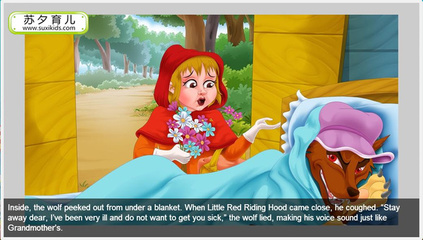根据教学大纲的规定和新课标的要求,英语是必须掌握的课程,初中年级英语课程要为学生的充分发展创造条件,为终身学习打下基础。下面是小编带来的初一英语课的文章 ,欢迎阅读!
初一英语课的文章Unit 3 Why do you like koalasLanguage goals
In this unit students learn to describe animals and express preferences and give reasons,

New language
Why do you like koala bears?. Because they're cute,They're pretty interesting, They're kind of shy, They're very big.
names of animals such as tiger, elephant, koala bear, dolphin
description words such as smart, cute, intelligent
names of countries: Australia, South Africa,
Recycled language
between, across from
He's/She's from ... He's / She's five years old.
name of countries; China, Japan, Brazil
Section A
Additional materials to bring to class:
coins or other markers for the Bingo game in 4.
Ask students to name as many animals as they can in English. Write the list on the board,
Ask students to describe each animal in some way.They may tell its color or tell if it is big or small.
Say, Today we are going to learn the names of some more animals. Well also leam how to say which ones we like and tell why we like them.
la This activity introduces the key vocabulary.
Focus attention on the map of the zoo showing pictures of animals. Ask students to point to and name any animals they can.
Point to the animals one by one and say the name of each. Ask students to repeal.
Point out the numbered list of words. Say each one and ask students to repeat.
Then ask students to match each word with one of the pictures. Say, Write the letter of each animal in the blank by that animal's name. Point out the sample answer.
Check the answers.
1 b This activity gives students practice in understanding the target language in spoken conversation.
Point to the animals in 1a- Ask students to point to and name the animals.
Say, I'm going to play recordings of three conversations. Listen carefully as you look at the words in la.Put a checkmark in front of the name of each animal you hear.
Play the recording the first time. Students only listen.
Play the recording a second time. This time students check each animal name they hear.
Correct the answers.
1 c This activity provides guided oral practice using the target language.
Call attention to the example conversation in the picture. Ask two students to read it to the class. Answer any questions they may have.
Point out the four description words. Ask a student to read them aloud. Review the meaning of each word.
Say, Now you can make conversations about animals.Your conversations can be like the example. Use these description words.
Ask students to work in pairs. Have them take turns saying both parts.
If students need help getting started, demonstrate another conversation with a student. For example:
Teacher: let's see the elephant.
Student: Why do you want to see the elephant?
Teacher: Because it's very smart.
Ask some students to present their conversations to the class.
2a This activity provides listening practice using the target language.
Call attention to the two blank lines on the left. Say,You will hear a recording of a conversation. Listen carefully. Then write the names of the two animals you hear on these lines.
Play the recording the first time. Students only listen.
Play the recording a second time. This time students write in the names of the animals.
Check the answers.
Point out the adjectives listed on the right. Ask a student to say the words.
Say, Now I will play the recording again. This time draw a line between each animal and the adjective you hear.
Play the recording and have students match each animal with an adjective.
Correct the answers.
2b This activity provides listening and writing practice using the target language.
Call attention to the conversation and the blank lines in it Say, You will hear the recording again. This time please write a word from the box on each blank line. Some words can be used more than one time.
Ask a student to read the words in the box.
Play the recording. Check to see that students are writing a word from the box on each line of the conversation.
Go over the answers.
2c This activity provides guided oral practice using the target language.
Call attention to the conversation in the picture. Ask two students to read it to the class.
Say, Now you can have conversations like this one.Use the words in Box 1, Box 2, and Box 3 in your conversations.
Demonstrate a conversation with a student. For example:
Student: Do you like penguins?????????Teacher: Yes, I do.????????Student: Why?
Teacher: Because they're very cute.
3a This activity provides reading practice using the target language.
Point to and say the names of the three countries on the maps and ask students to repeat
Point to the three animals and ask a student to name them.
Say, Now draw a line between each animal and the country it comes from.
Correct the answers.
3b This activity provides guided oral practice using the target language.
Point to the conversation in the picture. Ask a pair of students to read it to the class.
Ask students to work in pairs. Say, Now you can talk about where animals come from. Point to the map and animals students matched up in 3a-
Say, Work with a partner. Take turns asking and answering questions about the countries and animals in 3a.
After a few minutes, ask several pairs to say the conversation for the class.
Section B
Additional materials to bring to class:
Pictures of household pets and zoo animals cut out of magazines for Follow-up activity 1.
1 This activity introduces more key vocabulary,
Call attention to the animals in the picture and ask a student to say the name of each one.
Point out the list of eight numbered adjectives at the top.
Say, Now please match the adjectives at the top with the animals in the picture. Write the letter of the animal on the line after the adjective. Point out the sample answer.
As students work, move around the room offering to answer questions as needed.
Correct the answers-
2b This activity provides listening and writing practice using the target language.
Call attention to the three headings. Animal, Maria's Words and Tony's Words, and the write-on lines under each.
Say, Now I will play the recording again. This time please write the name of the animals each person talks about and the words they say.
Play the first four lines of recording and stop the tape. Ask, What animal are they talking about? (the elephant) What words does Maria use to describe the elephant? (interesting, intelligent)
Point out the write-on lines where students can write these words.
Play the whole recording and have students write the words they hear on the chart.
Check the answers.
3 This activity provides guided oral practice using the target language.
Call attention to the dialogue next to the picture. Ask two students to read it to the class.
Say, Work in pairs. Use sentences like these to say what you think about different animals.
Demonstrate the activity with one or two students. For example, say, I like dolphins. They're intelligent.
Ask students to work in pairs. As they work, move around the room checking on progress.
Ask some pairs to present their conversations to the class.
3a This activity provides reading practice using the target language.
Point out the three descriptions of animals. Ask students to take turns reading one aloud.
Then draw attention to the pictures of animals below.Say, Write the letter of the animal in the blank lines above its description. There is one animal that is not described.
Check the answers.
3b This activity introduces some new vocabulary words and provides reading and writing practice using the target vocabulary.
Call attention to the pictures of animals in 3a, and draw attention to the grass, leaves, and meat. Ask a student to explain each word or use it in a sentence to show he or she understands what it means. Teach the expression sleeps.
Point out the description in 3b with blank lines where some words are missing. Read it to the class saying blank each time you come to a blank line.
Point out the six words in the box. Say, You can write these words in the blanks. Use each word only once.
As students work, move around the room checking progress and offering language support as needed.
Check the answers.
3c This activity provides reading and writing practice using the target language,
Say, Now you can write a description like the one in 3b. You can use some of the same words. Write about any animal you like.
You may wish to do a sample description with the class. Choose an animal's name and write it on the board. Then ask students to make statements about the animal.Repeat each statement and then write on the board. You can ask leading questions such as. Is it big? Is it lazy? Does it eat grass?
Ask students to write their own descriptions. You may wish to have less fluent students work with a more fluent partner
初一英语课的文章Unit 8 What is John likeLanguage goal
In this unit students learn to talk about what people are like.
New language
Who's that? That's Mike.
What's he like? He's shy.
What's she like? She's unfriendly.
Section A
Additional materials to bring to class:
pictures from newspapers and magazines for Follow-up activity 1 .
Ask a student to stand in front of the class. Ask students questions about this student using language they already know. For example, What's his/her name? Where is be/she from? What's his/her address? What's his/her favorite kind of music?
Then say, In this unit we're going to learn to say more about people. Write the six new words from page 47 on the board and use one or two of the words to describe the student standing in front of the class. For example,He's/She's friendly. He's/She's smart. Use gestures, facial expressions and/or translation to clarify the meaning of each statement. Point to each word on the board as you
use it to describe the student.
1 a This activity introduces the key vocabulary.
Focus attention on the picture. Ask students to tell what the people look like. They may mention that some one is tall, has blond hair, etc. Then point to a person in the picture, name the kind of personality he or she represents (smart, funny, serious, friendly, shy, or unfriendly) and ask students to repeat each word. Say a sentence or two about each kind of personality. She's smart. She studies a lot. She getsA's in all her classes.
Point out the numbered list of words. Say each one and ask students to repeat these words. , -
Then ask students to match each word with one of the people. Say, Write the letter of each person next to one of the words. Point out the sample answer.
Check the answers.
1 b This activity gives students practice in understanding the target language in spoken conversation.
Point to the picture. Ask students to identify the person ality type of each person. For example: She's smart.He's funny.
Play the recording the first time. Students only listen.
Play the recording a second time. This time, point to the six people. Ask students to write the number 1 next to Billy, the number 3 next to Jane and the number 2 next to Angela. You may wish to write these names and numbers on the board for students to look at as they work.
Correct the answers.
1 c This activity provides guided oral practice using the target language.
Point to the example in the speech bubbles in activity la. Ask two students to read it.
Say, Now work with a partner. Make your own conversations about Billy and Jane. Student A talks about Billy. Student B talks about Jane.
Have students work in pairs making conversations about Billy and Jane. As they talk, move around the room monitoring their work. Offer language or pronunciation support as needed.
Ask some pairs to present their conversations to the class.
2a This activity provides guided listening practice using the target language.
Point out the chart. Read the column headings to the class. Then have one student read the list of names to the class, another student read the list of relationships to the class, and a third student read the list of personality words to the class.
Say, You will hear a recording of four conversations.In the chart, circle all of the words that you hear.
Play the tape the first time. Students only listen.
Play the tape a second time. Say, Circle all the words you hear in these three columns.
You may want to play the tape several times so students can finish and check their answers.
Correct the answers.
2b This activity provides listening practice using the target language.
Call attention again to the chart. Point out the lines that are drawn between "Mike", "Peter's brother", and "shy"!
Say, I will play the tape again. This time, draw lines to match the words that are about each person in the chart. Mike is Peter's brother and he is shy, so lines are drawn to connect all those words. Please do this for the other three people.
Play the tape. Students draw lines connecting the related words.
Check the answers.
2c This activity provides guided oral practice using the target language.
Point to the example in the speech bubbles. Ask two students to read the dialogue. Show students how this dialogue connects with the chart in activity 2a.
Say, Now work with a partner. Make your own conversations about the chart. You can use sentences like the ones in activity 2c.
As students work in pairs, move around the room monitoring their work. Offer language or pronunciatiol support as needed.
3a This activity provides guided oral practice using the target language.
Point out the four sentences next to the picture.Ask different students to say one of the sentences each.
Say, Now number the sentences so that they make a conversation. The first one is done for you. The first line of the conversation is "Who's the tall, thin boy with curly hair?" Please work in pairs.As students work, move around the room monitoring progress.
After students have finished numbering the sentences, check the answer. Then say. Now please practice the conversation. Take turns asking about Jack.
Ask several pairs of students to read the dialogue to the class.
3b This activity provides oral practice using the target language.
Call attention to the example in the chart. Ask one student to introduce "Anne" to the class (Anne's smart and interesting. She likes monies and Kung Fu).
Explain that students have to write words that describe their riends' personalities and hobbies. Ask,Are they friendly or nfriendly? erious or funny? Smart or shy? What sports do they like? What do they like to do in their leisure time? What clothes do they like to wear?What else can you say about them?
Have students complete the chart individually. As they work, move around the classroom monitoring progress.
When they have completed the chart, ask students to introduce their friends to their partners.
Ask several students to introduce one of their friends to the rest of the class.
4 This game provides guided listening, speaking, and writing practice using the target language.
Point out the questions and answers in the speech bubbles. Ask two students to perform the dialogue.
Reintroduce the question, What are you like? by asking one or two students the question and prompting a reasonable answer, such as, I'm serious or I'm friendly.
Read the instructions to the class or have a student do this.
Point out the list of six personality types and the sample answer, Dave. Say, Now talk to your class mates. Ask the question, "What are you like?" Get as many answers as you can in ten minutes.
Answer any questions students have about how to play the game. Remind students that you will stop the game in ten minutes.
When the game is over, ask. Who has ten names on your chart? Who has twelve names? Continue until you find the student with the most names. That student is the winner of the game.
Ask the winner to read his/her list of personality types and names to the class.
Alternative: If you do not want students to get up and walk round the class, then you can ask them to do ?the activity sitting down. They an ask students sitting near them, "What are you like?" The student who finds the largest number of different personal ity types is the winner.
Section B
New language
more words to describe people's personalities: generous,outgoing, easygoing, moody
1 This activity introduces more key vocabulary.
Focus attention on the four pictures. Ask students to tell what they see in each picture. Guide students to understand the meaning of each word through facial gestures and/or translation.
Then review the four words again, adding a sentence or two describing each personality type. For example you might say, She's generous. She gives people things.She doesn't keep everything/or herself She's a generous person.
Point out the numbered list of words. Say each one and ask students to repeat.
Then ask students to match each word with one of the pictures. Say, Write the letter of each picture next to one of the words. Point out the sample answer.
Check the answers.
2a This activity provides listening practice using the target language.
Say, You are going to hear a conversation. Mary is talking with a friend. Listen to the conversation and flu in the blanks in the chart under "Personality".These words tell what the people are like.
Play the recording the first time. Students only listen.
Play the recording a second time. This time ask students to fill in the words under "Personality" that describe the people's personalities.
Check the answers.
2b This activity provides more guided listening practice using the target language.
Say, Now you are going to hear the conversation again. This time listen to the conversation and/ill in the blanks under "Appearance." These words tell what the people look like.
Play the recording the first time. Students only listen.
Play the recording a second time. This time ask student to fill in the words under "Appearance" that describe what people look like.
Check the answers.
2c This activity provides guided listening and speaking practice using the target language.
Point to the example in the speech bubbles. Ask two students to read it to the class.
Ask students to work in pairs. Say, Use the chart in activity 2 a to ask and answer questions about the people in the picture.
As students work, move around the room monitorin progress.
Ask some pairs to present their conversations to the class.
3a This activity provides reading and writing practice using the target language.
Call attention to the letter and ask students to read one sentence each to the class. Ask some comprehension questions to be sure students understand the main ideas in the letter. For example, What is the girl's name?Where does she want to go? How old is she?
Point out the application form. Point to and read the five headings to the class. Say, Now use the information in the letter to fill in the application form. Ask students to work individually.
Correct the answers.
3b This activity provides more reading and writing practice using the target language.
Call attention to the application form. Point out that it looks just like the one they just filled in.
Say, Now read the information on this form and write a letter like the letter in activity 3a. You can look back at that letter/or ideas.
Ask students to work independently. As they work,move around the room monitoring progress and offering assistance where eeded.
Ask a student to read his or her letter to the class.
3c This activity provides writing practice using the target
language.
On the board, make a five-part chart similar to the ones in activities 3a and 3b. Include 1. Name, 2. Age,3. Nationality,4. Likes, 5. Personality.
Say, Copy this chart on separate paper and fill in the information about yourself before you start writing the letter. Offer spelling and pronunciation help with any new likes or personality types students wish to use in their letters. Write each new word on the board and have the class repeat it.
Ask students to work Independently. As they work,move around the room monitoring progress and offering assistance where needed. .
Ask several students to read their letters to the class.
4 This activity provides listening and speaking practice using the target language.
Read the directions to the class.
Say, What do we ask to find out someone's name?Guide students to answer. What's your name? Write this on the board. Elicit more topics to ask about.
Afterward, point to each of the questions on the board. Ask students to repeat each one after you. Compare the What do you like? and What are you like? questions and point out different answers to each.
Ask students to work with their partners to ask and answer questions. Suggest that they each take the student and the teacher role once.
Ask several pairs to present their conversations to the class.
Review unit 8
1.Question
What??s he/she/Fan Jianqiang like?
He/She is----
2.Personality
He is serious
She funny
Gong Yadong smart
They are friendly
My sister shy
unfriendly quiet
gentle and quiet introverted
outgoing generous
 爱华网
爱华网



